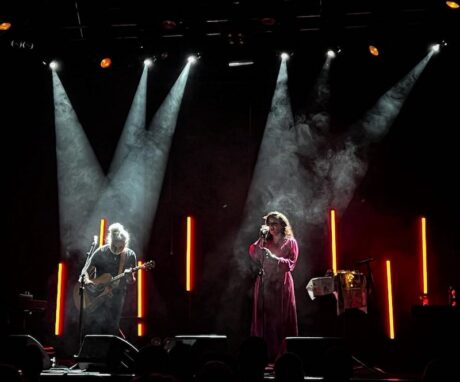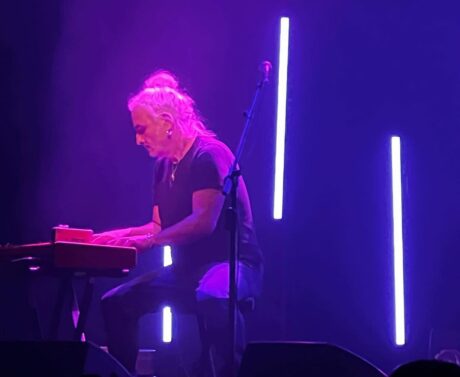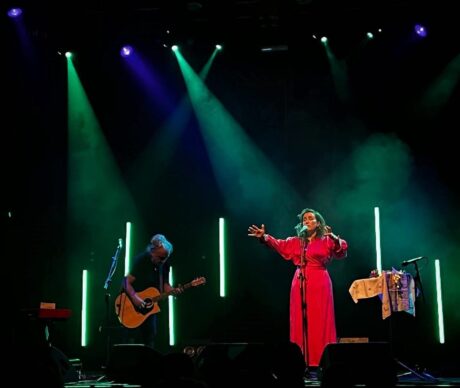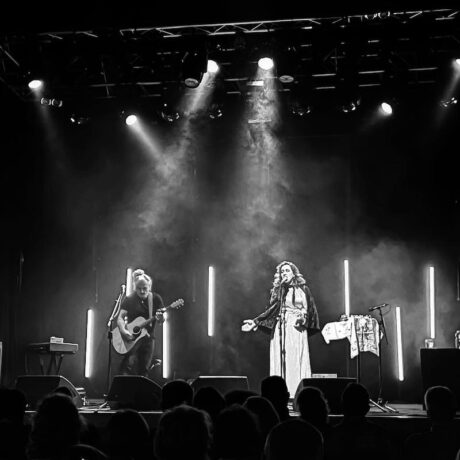
Some 35-years ago, a young Irish singer was performing a gig when she met another aspiring musician who invited her to perform on one of his demo tracks. Decades later Maria Doyle Kennedy and her husband Kieran Kennedy are still going strong with over 12 albums recorded, multiple awards, and their own record company. Maria has also gone on to become one of the most prolific Irish actors, known throughout the world for her starring roles in hits like Outlanders and classics, including Downton Abbey.
In February, the duo celebrated their musical odyssey with a two-person show at Dublin’s popular Button Factory. Supporting their dreamy performance was a light show by Steven Douglas of Craorag Lighting Design that created a deeply evocative mood aided by some Chauvet Professional ÉPIX Strip Tour fixtures from the venue’s house rig.

For Douglas, whose work for acts such as The Killers, Jonas Brothers and Alicia Keys has taken him to venues like Madison Square Garden and Wembley Stadium, the opportunity to busk an intimate show on a smaller stage represented a welcomed change of pace. “This show came together rather quickly, which was exciting,” said Douglas. “It was entirely busked, which was challenging, but refreshing and rewarding after doing so many preprogrammed shows where you pretty much know what is going to happen. Our PM, Duchess Iredale, and FOH Tom Skerritt were a big help in making this work with their insight into the music, both having a long running relationship with the artists.”
To create a distinct thoughtful aura during the show, Douglas used eight ÉPIX Strip Tour fixtures to create a slightly asymmetrical look on stage. Rather than arrange the linear fixtures four-per-side, he positioned four units on one side and three on the other. The eighth strip fixture was placed directly behind Maria Doyle Kennedy to create a background glow. “The slightly asymmetrical pattern worked to create a wave-like look,” said Douglas. “I wanted this because it felt a little more natural than a perfectly defined symmetrical look. This definitely suited the music better.”

Adding another element of depth to the design was Douglas’ deft use of dark space. He often used darkness to define the area between the two artists on stage, broadening it or narrowing it by changing the output of the ÉPIX fixtures. “There was definitely a need for dark space to allow the looks to suit the music, which is quite theatrical and dramatic in places,” he explained. “Given that there were only two people on stage and a limited amount of fixtures, we were able to use a lot of darkness. There was no need to light most of the stage.”
Lighting on the stage often involved warm amber tones from the ÉPIX units and ground fixtures, juxtaposed to white light from overhead sources. “Maria really wanted to keep the majority of the show in a warmer color palette,” said Douglas. “We all felt that this was more in keeping with the mood than going ‘too cold.’” Undoubtably, the enthusiastic fans at the Button Factory on this February evening would readily agree. Evoking heartfelt yearnings for that welcoming place just over the horizon, the performance summoned forth the heart and soul of Irish music, a sound that surely could never be described as “cold.”

www.chauvetprofessional.com


